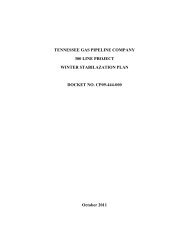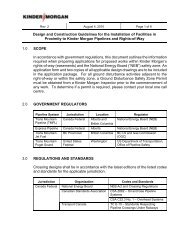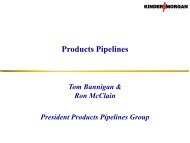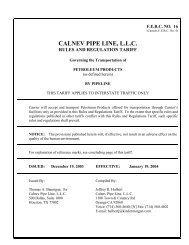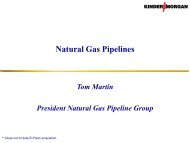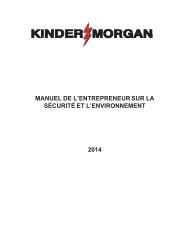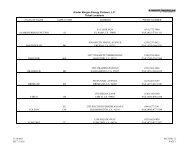Covered Task - Kinder Morgan
Covered Task - Kinder Morgan
Covered Task - Kinder Morgan
You also want an ePaper? Increase the reach of your titles
YUMPU automatically turns print PDFs into web optimized ePapers that Google loves.
E. Be able to recognize and respond to abnormal operating conditions that might be encountered when performing this covered task.105.12 Operations of Pipeline System – emergency station shut-inNote that this refers only to the shutting in a station without the discrete action of shutting down pipelines, although this action could result in an entire pipeline systembeing shut down automatically.A. Be able to define the events and/or circumstances that warrant use of the emergency shut-in device to shut-in a station on a pipeline system.B. Be able to recognize the devices and actions involved when the emergency shut-in device is activated, such as what equipment shuts down, which valvesautomatically close and what affect this shut-in will have on incoming and outgoing pipelines..C. Be able to explain what procedures should be followed after activation of an emergency shut-in or automatic shutdown (ASD). This may include determining cause,determining and implementing corrective action, assessing damage and procedures for restart of pipeline.D. Be able to locate the emergency shut-in device and execute the shut-in (local operating instructions)E. Be able to recognize and respond to abnormal operating conditions that might be encountered when performing this covered task.105.13 Operations of pipeline system - Unit adjustmentA. Be able to determine when an appropriate adjustment should be made.B. Be able to determine if the pipeline can accommodate the pressure change resulting from the proposed unit adjustment.C. Be able to execute a unit adjustmentD. Be able to recognize and respond to abnormal operating conditions that might be encountered when performing this covered task.105.14 Operations of pipeline system - Tank ManagementNote: this refers only to DOT-covered tanks, such as break-out tanks or relief tanks connected to a DOT pipeline.A. Be able to determine the capacity constraints for each tank within the Operator/Controller’s area of responsibility (local operating procedures).B. Know the acceptable product types for each tank in the Operator/Controller’s area of responsibility. (local operating procedures)C. Be aware of OQ qualification requirements for overfill protective devices – knowledge of and response to tank level alarms (<strong>Covered</strong> <strong>Task</strong>s 105.06 and 105.07)D. Be able to recognize and respond to abnormal operating conditions that might be encountered when performing this covered task.105.15 Operations of Pipeline System - Monitor communicationsA. Be able to determine current communication status.B. Be able to recognize when communication has failed.C. Be aware of the effect of a communication failure on local and remotely controlled devices.D. Be able to take appropriate action to resolve communication failures (local operating procedures).E. Be able to recognize and respond to abnormal operating conditions that might be encountered when performing this covered task.105.16 Operations of Pipeline System - Monitor leak detection and line integrityPage 28 of 33



